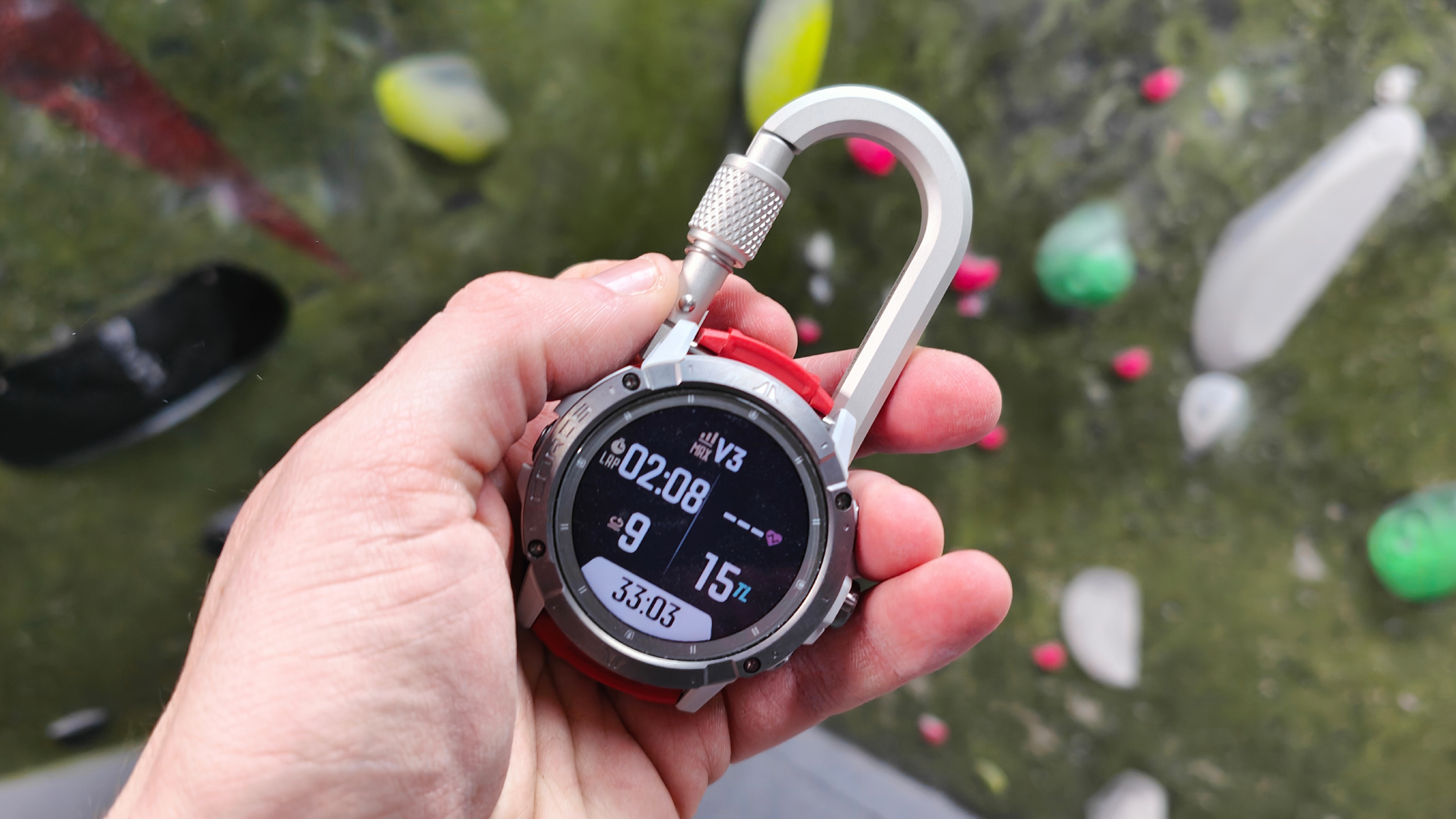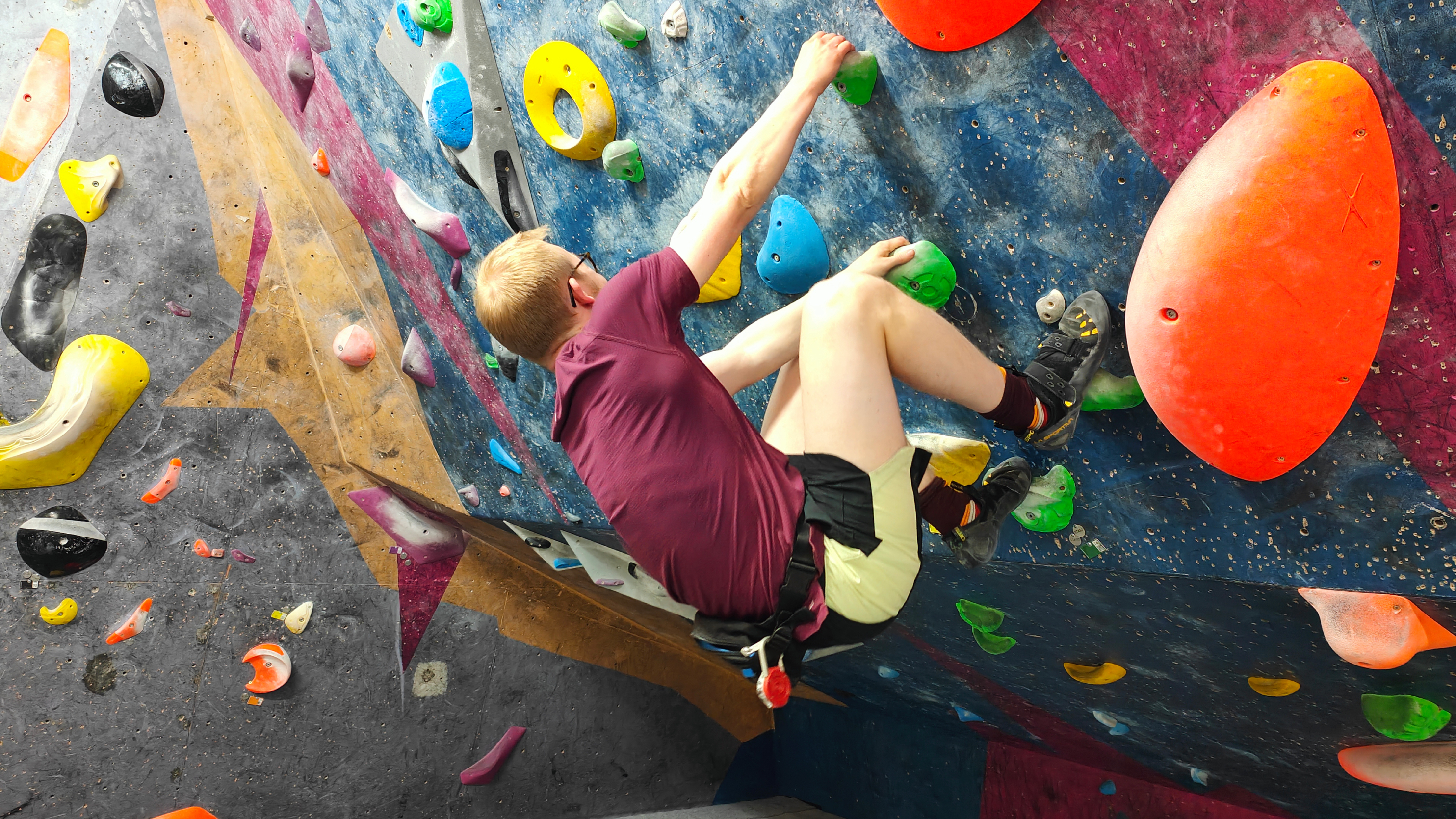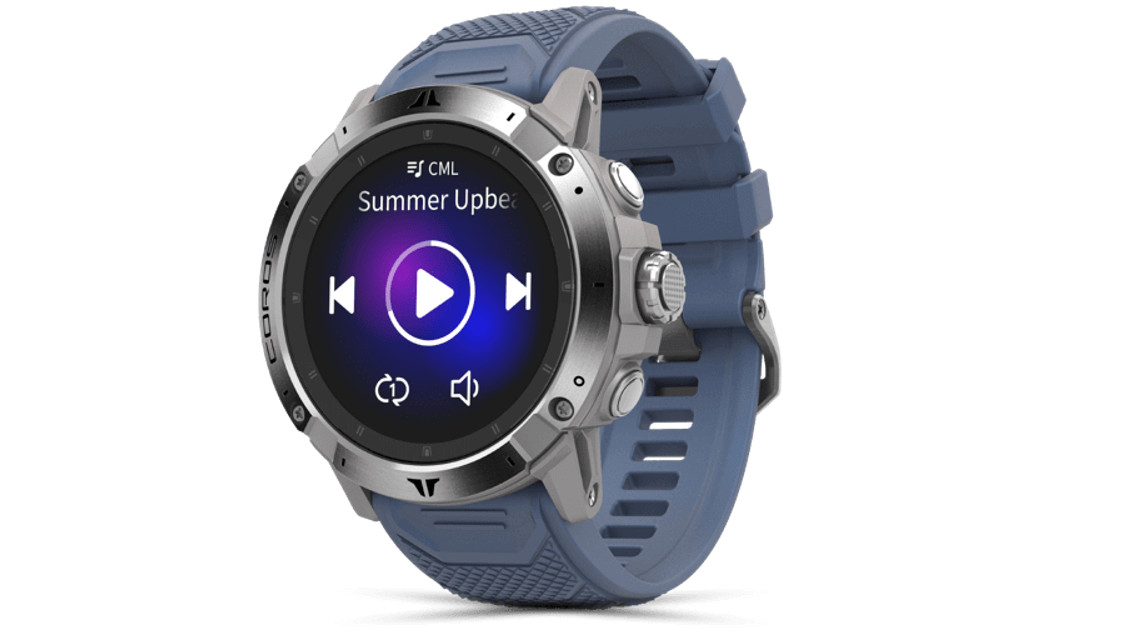
The Coros Vertix 2 isn’t the first time I tested a Coros device. I think Coros makes some of the top running and adventure watches in the business, and we rated the Coros Pace 3 as the best cheap running watch available right now. The Coros Vertix 2 is, however, my first adventure watch with such an emphasis on climbing.
Its climbing modes are packed to the gills with information I didn’t even know I needed, and serious adventurers and sport climbers will find the Vertix 2 very useful. It even comes with its own climbing accessory, the Coros Vertix 2 carabiner.
The carabiner is a neat invention, although pricey at $79 / £69 / AU$129, on top of the $599 / £599 / AU$899 adventure watch. The body of the watch is a little bulky as premium adventure watches tend to be. This means it might get in the way during intense or difficult climbs when there's no time to remove or adjust the watch while hanging from sheer rock.
So, Coros gives you the option to remove the watch straps and slide the body into the carabiner. You can leave it hanging on your belt or the strap of a chalk bag and it’ll still pick up loads of GPS information about your climb. Ta-daa: comprehensive information about your climbing session recorded in the moment, and you don’t even have to wear the watch on-wrist to do it.

The Vertix 2 speaks to five satellite networks (GPS, GLONASS, QZSS, Beidou and Galileo) to accurately position itself vertically and horizontally, calculating elevation very effectively. It supports global offline maps, allowing you to upload and sync to the Coros app beforehand. When I tested some of its climbing features at my indoor bouldering gym, I used its “bouldering” workout profile and got a simpler interface.
In the same way that you can divide a workout into segments using one of the best Apple Watches, the lower button on the Vertix 2 allows you to record route attempts, interspersed with rest periods. Once a route attempt is finished, the watch (having already recorded your elevation status during the run) gives you several options for labeling the route correctly. First, it allows you to record the difficulty level of the route using your classification of choice. I used the “V-grade” scale that I’m used to, climbing a couple of V1s, V2s and V3s for the purpose of testing.
Then it asks you to label it with one of several climbing terms, such as “onsight” (completing a route first time, with no “beta” knowledge of how to get up), “flash” (completing a route first time, with prior beta) or “redpoint” (completing a route with practice, having succeeded or failed at the route prior).
Using these terms combined with your elevation statistics, I could see at the end of my indoor bouldering session how many routes I climbed, how well I did, and how high those routes took me. All this is then synced to the Coros app, where you can compare it against future sessions.

I’ve been bouldering at climbing centers, but never seriously – it was just a fun, active way to hang out with friends. However, seeing my stats laid out before me – and having a convenient way to record them that wasn’t strapped to my wrist where it could get in the way or get scratched – made me want to push myself in a second session, to see whether I could upgrade. I wanted to test myself on more failed attempts and do higher routes. By quantifying the activity and applying a measurable, performance-based metric to it, I was driven to improve those numbers.
Other than the elevation figures and times, a lot of the information here is self-recorded, so in theory, you don’t need a Coros Vertix 2 to do this; just a pen and a notebook, or a spreadsheet. However, I was struck by the ease with which the watch’s framework allows you to record these figures at the time, with just a couple of button presses: the user experience is excellent, and returns you to the rest period timer in seconds. If I could get this much out of it, with my relative bouldering inexperience, serious climbers are going to love the Vertix 2. Stay tuned for our full review.







